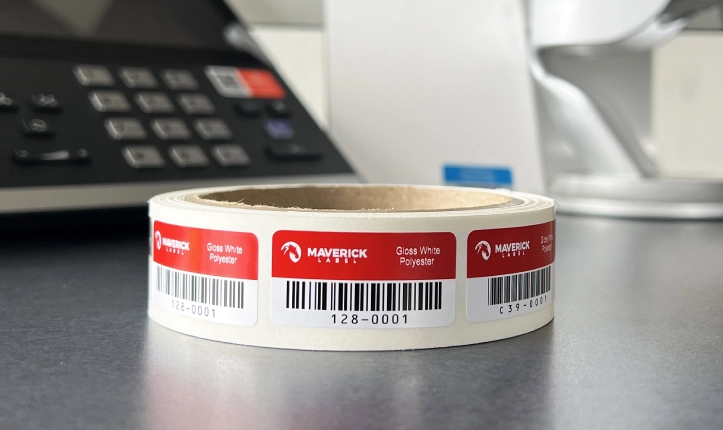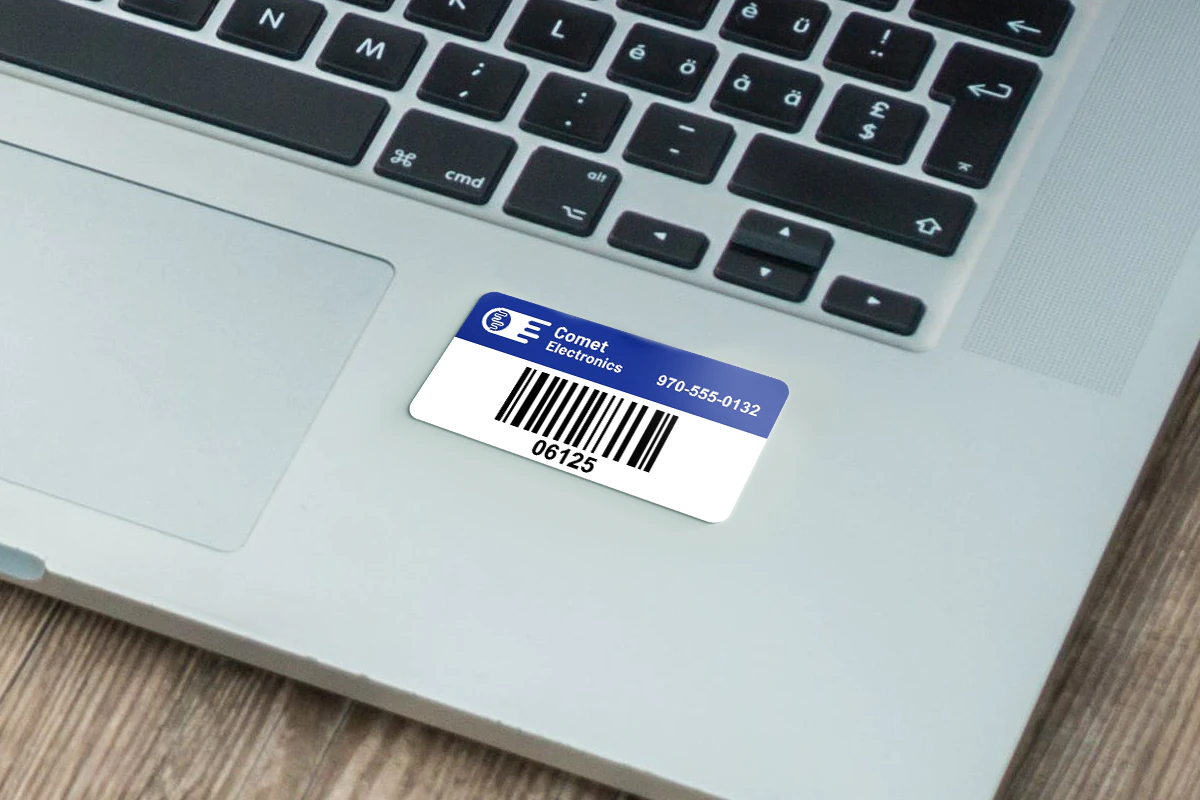Asset tags play an essential role in asset management across multiple industries, providing a means to track and identify valuable items. Selecting the right material for asset tags is crucial for durability and performance, especially in challenging environments. This guide will discuss the various materials used for asset tags, each with distinct advantages.
Overview of Asset Tag Materials
Understanding the different materials used in asset tags can help you determine which type best suits your application. Key materials include polyester, aluminum, vinyl, and LexSaver®️plus, each offering unique benefits.
Polyester
Polyester asset tags are known for their durability and versatility. These tags resist scratches, chemicals, and UV exposure, making them ideal for both indoor and outdoor use. Polyester tags are also available in various finishes, including matte and gloss, allowing for customization to suit different aesthetic preferences.
Polyester tags are commonly used in office environments and warehouses where durability is required. They can withstand daily wear and tear while maintaining legibility, making them suitable for a wide range of applications.
Aluminum
Aluminum asset tags offer exceptional durability and resistance to harsh conditions. These tags are lightweight yet robust, capable of withstanding extreme temperatures and exposure to chemicals. The anodized finish on aluminum tags adds an extra layer of protection, enhancing their resistance to abrasion and corrosion.
Aluminum tags are well-suited for industrial applications where resilience and longevity are critical. They are often used to label machinery, equipment, and outdoor assets that face environmental challenges.
Vinyl
Vinyl asset tags provide flexibility and ease of application. These tags are highly durable and can adhere to a variety of surfaces, including curved and textured surfaces. Vinyl is resistant to moisture, making it suitable for use in wet environments.
Vinyl tags are frequently used in settings where flexibility is essential, such as labeling pipes and cables. Their ability to conform to irregular surfaces makes them a versatile choice for many applications.
LexSaver®️plus
LexSaver®️plus is a specialized material designed for high-performance asset tagging. It offers superior resistance to solvents, chemicals, and abrasion. LexSaver®️plus tags are ideal for environments where harsh conditions are a concern, providing long-lasting durability and reliability.
These tags are particularly useful in industries such as healthcare and pharmaceuticals, where exposure to chemicals and frequent cleaning is common. LexSaver®️plus ensures that labels remain intact and legible despite challenging conditions.

Durable and High-Performance Materials
For applications requiring exceptional durability and performance, certain asset tag materials stand out. LexSaver®️plus, anodized aluminum, and flexible aluminum are prime examples of high-performance materials designed to withstand demanding environments.
LexSaver®️plus
LexSaver®️plus tags are engineered for maximum durability and resistance. This material is ideal for environments with frequent exposure to chemicals and physical stress. LexSaver®️plus maintains its integrity even in the harshest conditions, ensuring asset tags remain legible and functional over time.
Anodized Aluminum
Anodized aluminum tags are treated to create a protective layer that enhances their durability. This treatment makes them resistant to corrosion, abrasion, and UV exposure. Anodized aluminum is perfect for outdoor applications and industrial settings where tags are exposed to the elements.
These tags are often used on construction sites, manufacturing facilities, and other environments where robustness is a priority. The anodized finish not only protects the tag but also improves the readability of the printed information.
Flexible Aluminum
Flexible aluminum tags combine the strength of metal with the adaptability of flexible materials. These tags can conform to curved surfaces while providing excellent durability. Flexible aluminum is ideal for labeling equipment and assets with irregular shapes.
This material is commonly used in automotive and aerospace industries, where flexibility and durability are essential. Flexible aluminum tags can withstand vibrations, extreme temperatures, and other challenges faced in these sectors.
Specialized Asset Tag Materials
For specific applications requiring additional security or tamper-evidence, specialized asset tag materials such as destructible and void polyester offer unique solutions.
Destructible
Destructible asset tags are designed to break apart when tampered with, making them an effective deterrent against unauthorized access. These tags cannot be removed without leaving evidence of tampering, providing an extra layer of security.
Destructible tags are often used in settings where asset protection is critical, such as electronics, pharmaceuticals, and high-value inventory. They ensure that any attempt to remove or alter the tag is immediately apparent.
Void Polyester
Void polyester tags leave a “void” message on the surface when removed, clearly indicating tampering. This feature makes them ideal for applications where security and integrity are paramount.
Void polyester tags are widely used in industries such as healthcare, electronics, and retail. They provide assurance that assets have not been accessed without authorization, helping maintain trust and compliance.

FAQs
What is the best material for outdoor asset tags?
Anodized aluminum is the best material for outdoor asset tags due to its resistance to weather, UV exposure, and corrosion. It ensures longevity and durability in harsh outdoor environments.
Can asset tags be customized with barcodes or QR codes?
Yes, asset tags can be customized with barcodes, QR codes, logos, and other information. Customization allows for easy scanning and tracking of assets, enhancing inventory management and security.
How do tamper-evident asset tags work?
Tamper-evident asset tags are designed to show visible signs of tampering when removed or altered. Materials like destructible vinyl and void polyester provide clear indications of tampering by breaking apart or leaving a “void” message.
How do I pick the right material?
To choose the right material, consider the environment, application, and specific requirements of the asset. Factors such as exposure to chemicals, weather, and physical stress will guide the selection of the most suitable material.
Are there asset tag materials suitable for extreme temperatures?
Yes, anodized aluminum and LexSaver®️plus are suitable for extreme temperatures. These materials offer excellent resistance to both high and low temperatures, maintaining performance and readability in challenging conditions.For more information on asset tag materials and customization options, visit Maverick Label Asset Tags.



